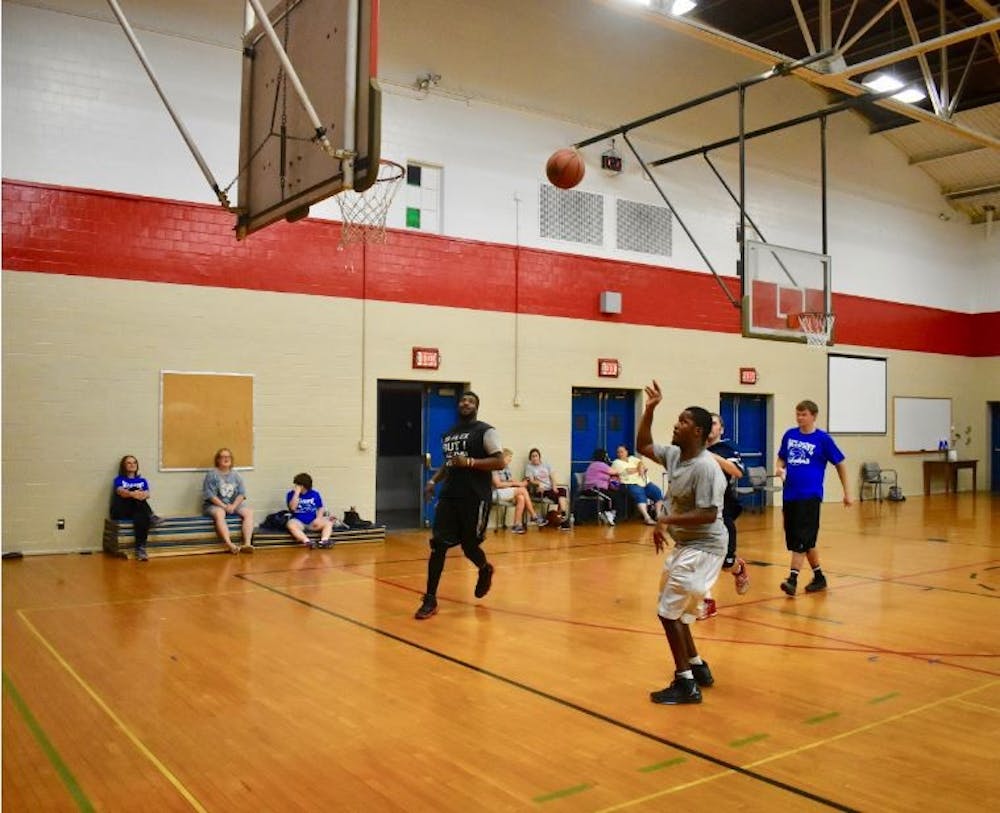Everyone in attendance knows the weekly, hour-long Inclusive Basketball session has come to an end when social work and gerontology professor Marita Flagler shouts to gather up.
Slowly, but surely, all of its participants — many of whom with a layer of sweat and a smile on their faces — stop what they are doing and make their way over to the group so they can debrief.
For participants like 14-year-old Patrick Rogers, whether is going to make the trip from Waynesboro the following week is not even a question.
“Being with my friends here, it’s great,” Patrick Rogers said.
Unfortunately, there are not a lot of similar inclusive programs in the area for him to participate in, according to Patrick’s mother, Deby Rogers. Though she helps Patrick stay involved with physical activities, like Challenger Division Little League Baseball and Therapeutic horseback-riding sessions at Wilson College, it is not always the easiest endeavor.
“We have to travel for a lot,” said Deby Rogers. “So it’s nice that Shippensburg offers this.”
The lack of availability of programs is a common theme for a lot of people with disabilities who want to get active.
Only 56 percent of adults with disabilities reported any leisure-time physical activity on a 2010 survey, according to the Inclusive Fitness Coalition.
And — while there are fewer statistics regarding children with disabilities — they, as well, are less likely to get involved in physical activities, according to a 2012 research article published in the International Journal of Pediatrics.
This leaves people with disabilities prone to developing chronic health conditions.
Availability of programs aside, though, there is a key difference between these aforementioned programs Patrick participates in and inclusive basketball. That being the inclusive nature.
Programs like Challenger Division baseball, Special Olympics and therapeutic horseback riding are meant for participation by only people with disabilities. This is evidence of how American society has segregated this demographic, according to Flagler, who was inspired to start Inclusive Basketball almost 10 years ago by a bowling program for people with disabilities.
“For me, the idea was to have basketball not as a special-needs program,” said Flagler, “but have it as a program where people with special needs from the community would be playing with the people from the university.”
The benefits of this are two-fold, according to Flagler. For one, it provides participants an opportunity for physical activity, which has been shown to positively impact behavior.


The Slate welcomes thoughtful discussion on all of our stories, but please keep comments civil and on-topic. Read our full guidelines here.